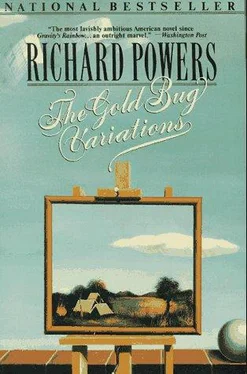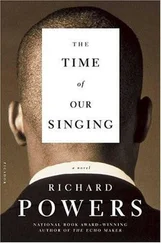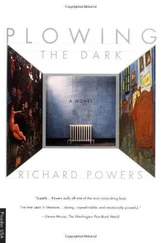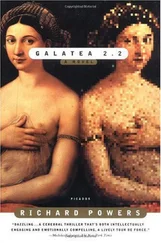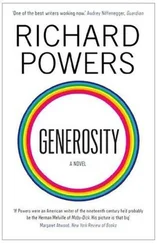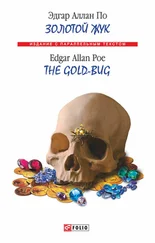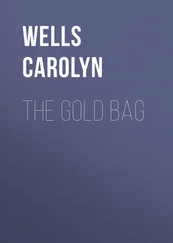Richard Powers - Gold Bug Variations
Здесь есть возможность читать онлайн «Richard Powers - Gold Bug Variations» весь текст электронной книги совершенно бесплатно (целиком полную версию без сокращений). В некоторых случаях можно слушать аудио, скачать через торрент в формате fb2 и присутствует краткое содержание. Год выпуска: 1991, Издательство: Harper Perennial, Жанр: Современная проза, на английском языке. Описание произведения, (предисловие) а так же отзывы посетителей доступны на портале библиотеки ЛибКат.
- Название:Gold Bug Variations
- Автор:
- Издательство:Harper Perennial
- Жанр:
- Год:1991
- ISBN:нет данных
- Рейтинг книги:5 / 5. Голосов: 1
-
Избранное:Добавить в избранное
- Отзывы:
-
Ваша оценка:
- 100
- 1
- 2
- 3
- 4
- 5
Gold Bug Variations: краткое содержание, описание и аннотация
Предлагаем к чтению аннотацию, описание, краткое содержание или предисловие (зависит от того, что написал сам автор книги «Gold Bug Variations»). Если вы не нашли необходимую информацию о книге — напишите в комментариях, мы постараемся отыскать её.
Gold Bug Variations — читать онлайн бесплатно полную книгу (весь текст) целиком
Ниже представлен текст книги, разбитый по страницам. Система сохранения места последней прочитанной страницы, позволяет с удобством читать онлайн бесплатно книгу «Gold Bug Variations», без необходимости каждый раз заново искать на чём Вы остановились. Поставьте закладку, и сможете в любой момент перейти на страницу, на которой закончили чтение.
Интервал:
Закладка:
Leaving the lab in late evening, he fails to recognize the outside, so deep are autumn's inroads. He heads to Stadium Terrace, extended concentration catching up with him in mild hallucinations. Passing the sewage facility, he transposes two letters in its sign: "Flirtation Plant." He hears his name in a distant car horn. The columns flanking Memorial Stadium, in inflamed peripheral vision, become a chorus line of Nike-Ajaxs in launch position. He knows what causes the phantoms; he even understands a little of the physiology involved. That doesn't make the tracers any less real.
He recalls his meeting weeks before, his fumbling attempts to convey the idea to Ulrich, who instantly intuited how little Ressler actually knew of his target. Weeks have slipped by, weeks of self-exile. He longs reluctantly for friendship with team members, conversation, any conversation, even shared silence. What is it that makes it so urgent to sacrifice the pleasures of inconsequential contact, to get to the insight, to be the first to announce a rearrangement of thought? He is more driven now than ever. The means are nearer than he imagined. He needs only another few months. Time to verify, hunt down obvious oversight. Flush out the variables. Add the imminent last links. But can he take that time in good faith, or is he merely drawing out, delaying?
At home, in the dark, he feels why he needs to race this thing, prove his own intellect, assign a portion of the unmapped world a fixed, unambiguous valence. He knows the cause, but he will not say it. At night, in the dark, he lies in his bunk and listens to a brilliant keyboard strain that will never again sound as it did. The piece flies along under his fingers, in his substrate. Even repeated exposure leaves him with no resistance to her code bug. He imagines the woman's face an inch from his. He reaches out, takes her head in his fingers, runs them over her meridian lines and ridges, around her ears, down to the slight flip at the base of her skull, back up to her crown. His innermost cells want to force up against hers, fuse, intermarry. He wants to fight for her, beat experience, propose himself as the best of all fits, the surviving solution. Yet part of him — the most recent addition to that composite surviving act — knows that knowledge this critical must do more than survive.
He is virtually there, on the threshold of a barrier-breaking as great as earth's first artificial moon. For the first time in the procession of biosphere, some part, some chance permutation threatens the technique, arrives at the place where it might reach down, feel its own material base, place its hands on its own mechanism, its own inheritance, grasp it as deeply as it can be grasped. His own contained code can synthesize the last span. But how can he begin to press his hands through if he cannot extract even the information in this breathtaking tune?
Night Music
A neat trick fires my imagination all afternoon. One lovely demonstration proves that the genetic tape is indeed written in triplet codons. I seem able to catch these things only in rough analogies. I imagine the string of letters:
YOUCANRUNFARBUTCANYOUFIXOURBADEAROLDMAN
In that form, the string conveys little. But if I know the cipher's word length is three, sense springs from the foliage:
YOU CAN RUN FAR BUT CAN YOU FIX OUR BAD EAR OLD MAN
The sense is still a bit cryptic, but I've shed enough noise for the emergence of message. Suppose something damaged this string as it was delivered. Parsing the letters into groups, I accidentally drop the first C:
YOU ANR UNF ARB UTC ANY OUF IXO URB…
Except for stray coincidence, the line now yields only nonsense. More gibberish results if I drop two letters near the beginning. But deleting three letters near the front produces:
YOC ANU NAR BUT CAN YOU FIX OUR BAD EAR OLD MAN
The message momentarily crumbles, only to rise again into sense. A single deletion near the beginning of a gene destroys the functionality of the synthesized protein. The same holds true for two deletions. But surprising modulation: three successive clipped bases partly restore the nature of the original protein, experimentally supporting a reading frame of three. This result, when combined with the sequential tape metaphor, provides a clue for solving the framing problem. If, in the catalog of sixty-four possible codons, one triplet stands for the start of the gene's message, such a marker would not only separate genes but would also establish the gene's word-frame.
My hunger for proofs grows as I consume them. I feel an unearned pleasure in tracing them, as if I were the first to haul them to the surface. As I catch the formal bug I begin to follow, in analogy, the cold joy, the distinction that had made Dr. Ressler seem so alien. The simplest, most childlike passion: he believed in readability — patterns connecting patterns — long after the age when the rest of us resign ourselves to adult confusion.
That triplet trick returns me to an evening Todd and I spent listening to the great tenth variation with him. Franklin should have been finishing his end-of-day processing. I should have been home, picking up the pieces of my domestic wreck. But neither of us could budge from the room, the formal spell Dr. Ressler had thrown over us. We'd been having an armchair discussion of current events accompanied by the standard background music for those parts. When the fughetta began its four bars of foreshadowing, Dr. Ressler broke off in midsentence. He announced, "Bass entry," and pointed to one corner of the room, as if the piano producing the line hid there. Thus instructed, I heard in the phrase an ornamented descendant of the first four notes of the sarabande. Not as they occurred in the original, but as sent out into the world, harmonically:

A second voice entered. "Tenor," Ressler commanded, pointing his other hand into the opposite corner. I heard the new voice chime in, duplicating the first, a fifth higher. Two more lines entered, question and answer, tonic and dominant, building up a complex clarity of texture. Ressler announced both in turn with near-shouts, "Soprano" and "Alto," cueing each voice, pointing a finger into the room's remaining corners.
At the edge of overflowing, the piece's motor rhythm stopped. The break lasted less than a breath. Immediately, a new harmonic variant on the four-bar subject made its way through the four-voice rotation again, this time rearranged, accompanied by a coun-terfigure. "Soprano," Dr. Ressler called out from the top, flipping toward the corner where he had first consigned that voice. "Alto," answered right hand with left. "Bass," he cued. I caught his eyes as he called out, "Tenor!" They were full, liquid with a throat-stopping delight.
When the fantastic construction dropped off into random silence, I looked over at Todd. He too, under the persuasion of Ressler's four spatially separate pianos, had heard something. He looked at Ressler imploringly, the way a child looks to a parent to explain the latest infecting crisis. But Ressler was off elsewhere, remembering, after three decades, his search for the underwriting metaphor. "Four-measure bass, four-base measure," he said, to no one in particular, as variation eleven already took the matter further. "Extraordinarily clever fellow, Bach. Ahead of his time."
Only tonight, my head full of mutation tricks, do I begin to name just what I heard, what connection Dr. Ressler mumbled about. Four voices, at four measures for each subject entry, the whole turn-taking undertaken twice, yielded thirty-two measures, a map of the thirty-two-note parent. Not a breath wasted. Nor did the three of us waste ours for catching it. With Dr. Ressler pointing them out, I heard the successive reentrant voices, layering one on top of another, musical analogs of those plastic anatomical overlays in biology books. Each transparent sheet contains its own, separate hierarchies — circulatory, skeletal, nervous. But each overlay, flipped on the stack, adds its system, compacts its parts into a surprising, indivisible composite.
Читать дальшеИнтервал:
Закладка:
Похожие книги на «Gold Bug Variations»
Представляем Вашему вниманию похожие книги на «Gold Bug Variations» списком для выбора. Мы отобрали схожую по названию и смыслу литературу в надежде предоставить читателям больше вариантов отыскать новые, интересные, ещё непрочитанные произведения.
Обсуждение, отзывы о книге «Gold Bug Variations» и просто собственные мнения читателей. Оставьте ваши комментарии, напишите, что Вы думаете о произведении, его смысле или главных героях. Укажите что конкретно понравилось, а что нет, и почему Вы так считаете.
